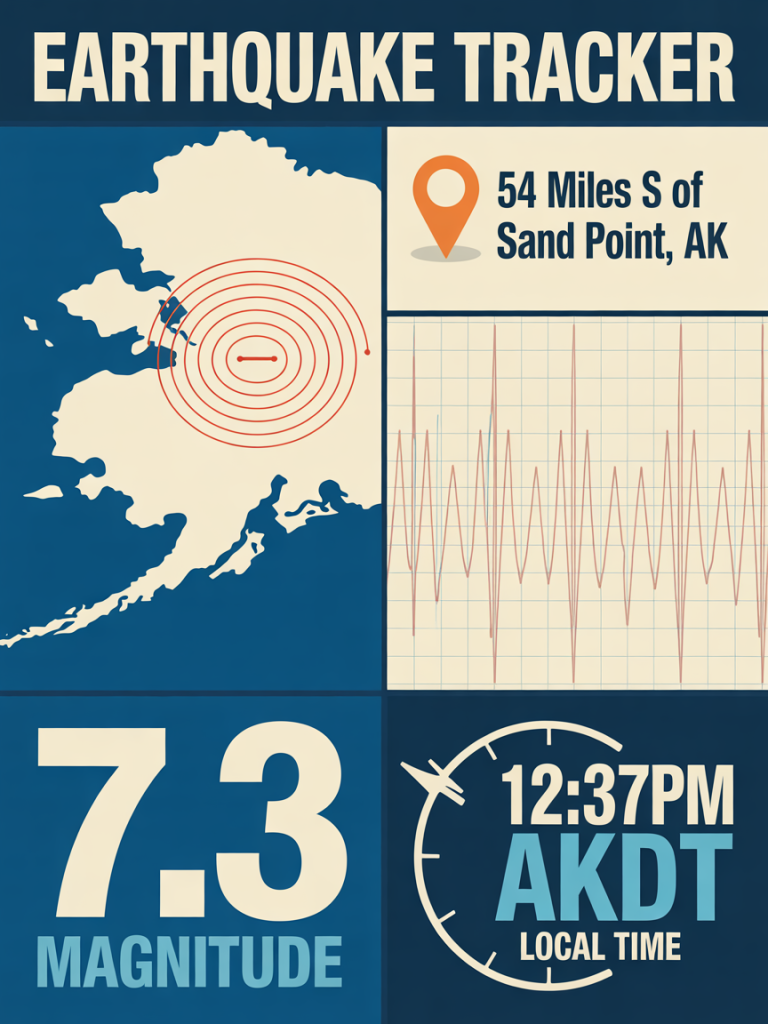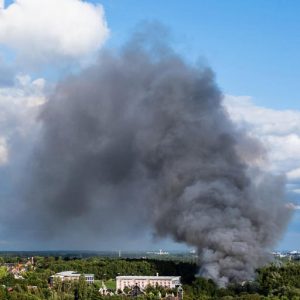Tsunami Advisory Lifted After Powerful 7.3 Quake Jolts Alaska’s Coastline
SAND POINT, Alaska – A powerful magnitude 7.3 earthquake struck near the coast of Alaska’s remote island chain Wednesday afternoon, briefly triggering tsunami warnings before the threat was downgraded and later canceled.
According to the U.S. Geological Survey, the quake hit at 12:37 p.m. local time, with the epicenter located about 54 miles southeast of Sand Point and a depth of roughly 12 miles beneath the seabed.
In the immediate aftermath, NOAA’s Tsunami Warning Center issued alerts for areas spanning from Kennedy Entrance to Unimak Pass, including Kodiak Island, Chignik, and Cold Bay. The U.S. Coast Guard quickly responded, evacuating staff at its Kodiak base to higher ground and readying air crews for emergency deployment.
Initial projections warned of a potential tsunami up to a foot high, prompting concern for localized impacts. A buoy off Sand Point did register a small rise in sea level—just 0.2 feet, or about 3 inches. But within just over an hour, the tsunami warning was downgraded to an advisory, and later, completely canceled as the risk diminished.
“The event did generate a tsunami, but it no longer poses any danger,” said the Tsunami Warning Center. While sea levels may still fluctuate slightly in the area, no major surge is expected.
There were no immediate reports of injuries or damage following the quake or minor tsunami.
“The southern coast of Alaska sits on one of the most active earthquake zones on the planet,” said Dr. Michael West, lead seismologist at the Alaska Earthquake Center. “Four out of every five quakes in the U.S. occur in this state.”
He noted that while strong quakes are common in the region, most pass without incident or widespread impact. “So far, signs suggest we got lucky today,” West added.
Tsunamis are caused by sudden shifts in the seafloor, often after large earthquakes or underwater landslides. Scientists continue monitoring data from today’s tremor to assess the full picture.






